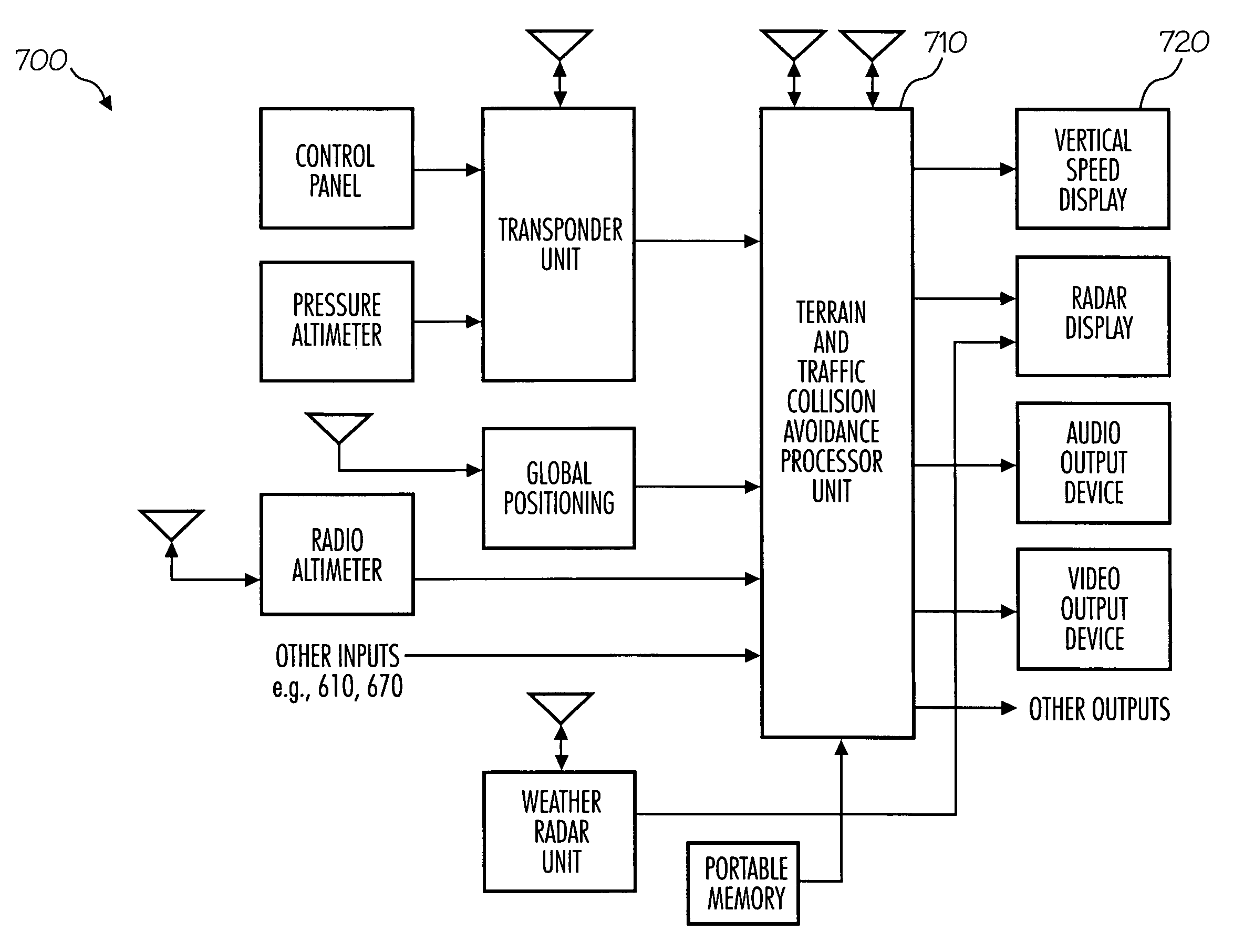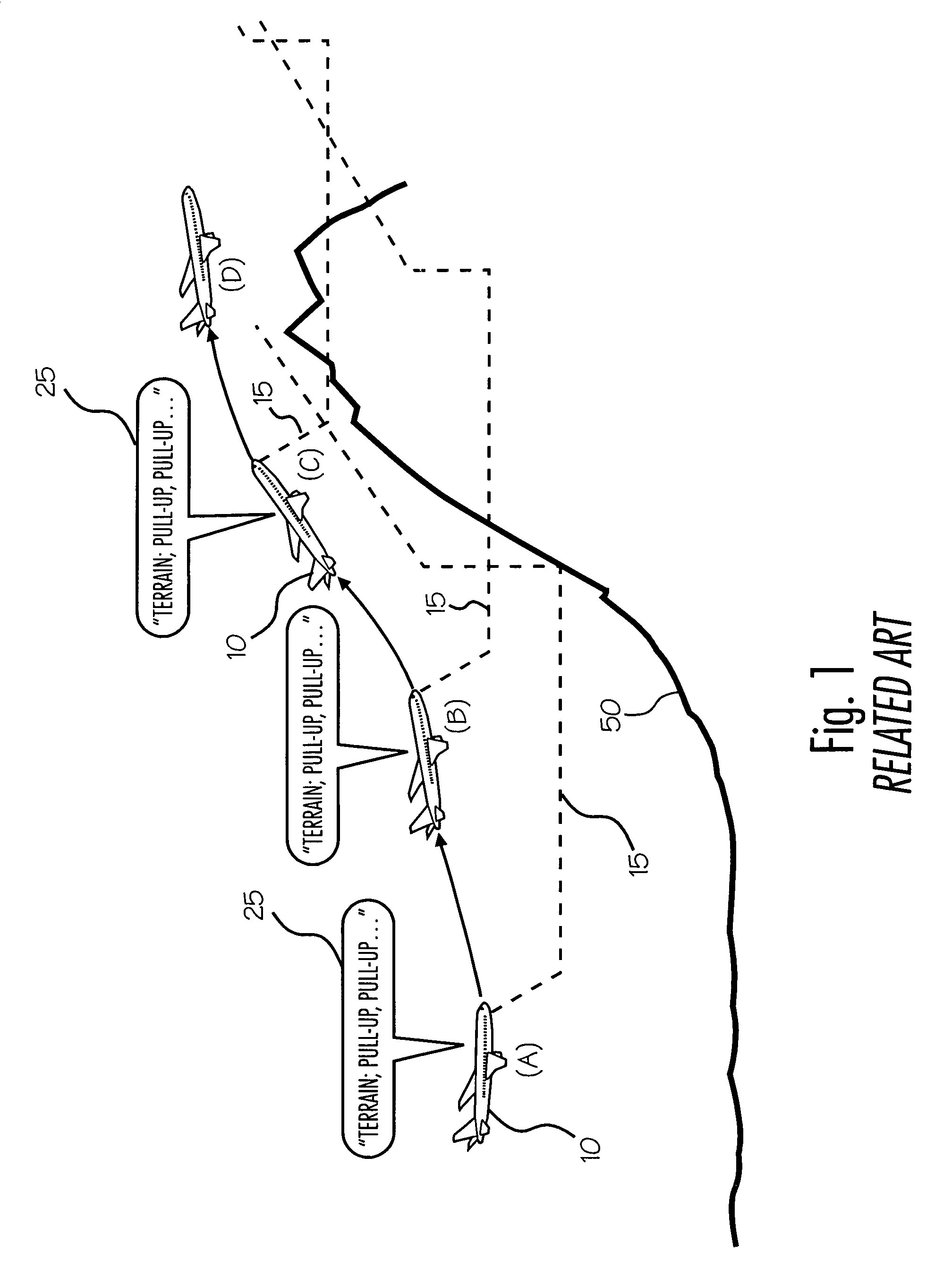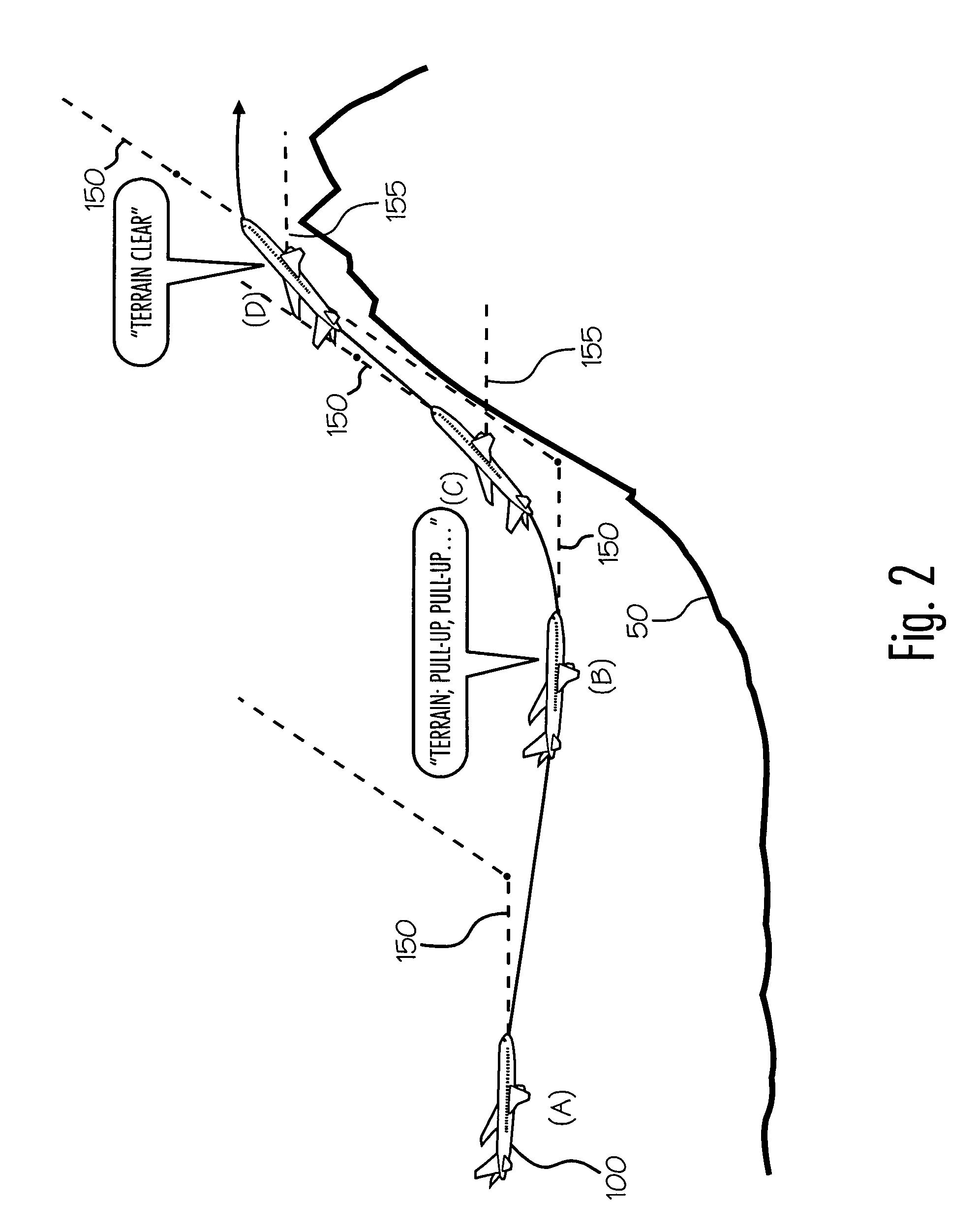Aircraft terrain warning systems and methods
a technology for warning systems and aircraft, applied in vehicle position/course/altitude control, process and machine control, instruments, etc., can solve problems such as aircraft not being able to sufficiently avoid a terrain threat, aircraft may not match the true climb angle of a particular aircraft with the predicted climb profile used, and aircraft may not be able to achieve the effect of avoiding collisions and avoiding collisions
- Summary
- Abstract
- Description
- Claims
- Application Information
AI Technical Summary
Benefits of technology
Problems solved by technology
Method used
Image
Examples
Embodiment Construction
[0031]Turning to FIG. 2, functional aspects of an improved method and system for avoiding collisions between an aircraft and terrain according to one preferred embodiment of the invention will now be described. In the scenario depicted in FIG. 2, aircraft 100 includes an improved TAWS of the present invention (for example, system 600; FIG. 6) having modified Forward Looking Terrain Avoidance (FTLA) capabilities. According to various aspects of the present invention, the modified FTLA in the TAWS of aircraft 100 utilizes a terrain avoidance profile 150 to determine whether a CFIT threat exists. When aircraft 100 moves from position (A) to position (B), terrain avoidance profile 150 intersects the data model of terrain 50, giving rise to a potential terrain threat. The TAWS in aircraft 100 issues an alert notifying the pilot that a potential terrain collision threat exists. The alert preferably continues until the pilot maneuvers aircraft 100 in a direction where profile 150 no longer...
PUM
 Login to View More
Login to View More Abstract
Description
Claims
Application Information
 Login to View More
Login to View More - R&D
- Intellectual Property
- Life Sciences
- Materials
- Tech Scout
- Unparalleled Data Quality
- Higher Quality Content
- 60% Fewer Hallucinations
Browse by: Latest US Patents, China's latest patents, Technical Efficacy Thesaurus, Application Domain, Technology Topic, Popular Technical Reports.
© 2025 PatSnap. All rights reserved.Legal|Privacy policy|Modern Slavery Act Transparency Statement|Sitemap|About US| Contact US: help@patsnap.com



